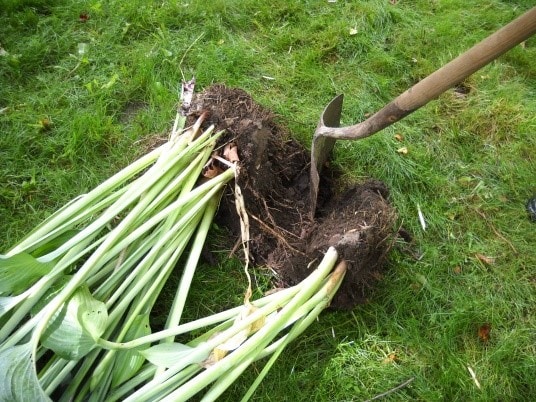September is a great time of the year to step back and take inventory of your perennial gardens.
Why do I say that? Well, it’s the time where you can see all the plants at their fullest for the season.
By spring, we tend to forget just how much space certain plants took up in the garden and how crowded certain areas were.
We also tend to forget how great certain perennials performed the previous season.
Did they flower well? Are they starting to lose their vigour? These are all indications that it may be time to divide some perennials.
September to early October is a great time to be transplanting or dividing your perennial clumps. The conditions right now are perfect for root growth to occur.
Optimal root growth happens when the air is cooler, but the soil is still warm from the summer’s sun.
If you wait too long to move your perennial plants, the roots will not have a chance to get growing before the soil temperature drops, and there is a greater risk of the root balls being pushed out of the ground by frost.
The general rule for what perennials to divide now and what is best to wait to divide in spring is this: divide spring and early summer flowering in the fall and divide late summer/fall blooming perennials in the spring.
By dividing the plants at the opposite time to their bloom, time allows the plant to put all its energy into the root system.
As mentioned above, there are different reasons why you may want to be dividing your perennials.
The first one is that the clump size may be too big for the area that it is in. By dividing the oversized clump, you can reduce its size, keeping it from overtaking the garden.
Another reason to divide a perennial is to rejuvenate the clump. When you see that the centre of the clump has no growth, that the only stems or leaves are found on the outer edges of the clump, it needs being divided.
With some perennials, when the clump is getting too crowded, it becomes less productive when it comes to flowering.
Irises are one plant where this is quite common. To rejuvenate its vigour, dividing the clump is the only solution.
The other reason for dividing your perennials is just to multiply your plants to create new gardens or to give away to friends and neighbours.
Steps to follow when dividing your perennials:
- If you can plan to divide your perennials on an overcast day with showers in the forecast, it will greatly help the plant recover from the roots being damaged. It would also be helpful to thoroughly water the plants a day prior to dividing.
- Before digging out the perennial in the fall, cut back the stems of the plant to three to four inches from the ground.
- Using a spade or garden fork, dig into the soil about four to six inches beyond where the shoots emerge. Dig all around the clump then pry up on rootball. Dig up the entire clump entirely and sit it on top of the ground or on a tarp. Instead, if you try to cut through the plant when it is still in the ground, you have no way of knowing how much root you will be getting and could be wasting parts of the plant.
- Using a sharp spade or knife, gently cut through the roots, dividing clump into as many pieces as desired. Each division should have at least three to five vigorous shoots and a healthy supply of roots. If the centre of the plant has died out, divide the living, outer portions into smaller clumps and throw out the dead, centre portion.
- To help get the new clump off to a good start, enrich the soil in the new planting areas with compost, composted manure or triple mix before planting the new divisions. Fertilize new plantings by scattering a handful of bone meal in the bottom of the planting hole. Bone meal is high in phosphorus which will help stimulate root growth.
- Fill in around the plant roots with triple mix or compost. Make sure that the plant is in the soil at the same depth that it was previously then water well.
Keep your garden flourishing by dividing your perennials when needed.
Joanne Young is a Niagara-on-the-Lake garden expert and coach. See her website at joanneyoung.ca.










